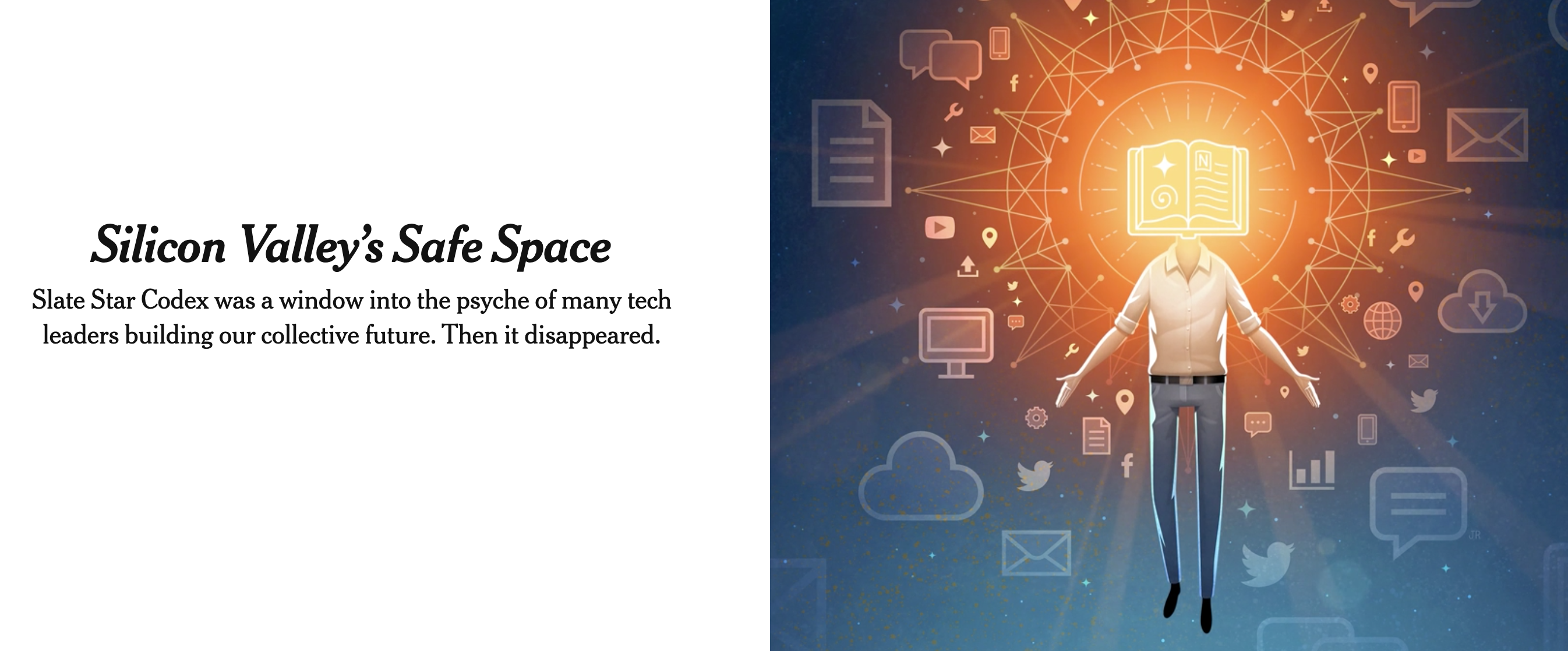I took out a New York Times subscription for the first time in 2020, mainly for the purpose of having a ringside seat on its accelerating metamorphosis from the ‘Grey Lady’ paper of liberal record to the Pravda of woke integralism. So far, I’m very much getting bang for my buck.
The latest kerfuffle concerns the vindictive treatment of Scott Alexander, a figurehead of Silicon Valley’s ‘rationalist’ subculture and author of the Slate Star Codex blog. After a power-struggle last year over the ethics of revealing Alexander’s name (which he won by taking the blog down) the New York Times recently ran a startlingly partial and falsehood-adjacent hit-piece on him, and Alexander has once again given as good as he got, simply by quoting his own writing next to the Times’ account of his views.
But it’s a mistake to see this conflict as an epic struggle between worldviews. In truth it’s not really a contest between mutually incompatible perspectives so much as a dispute between different branches of the same post-Christian theology.
To put it crudely, both the Silicon Valley rationalist and New York Times worldviews are progressive in the sense of thinking humanity can be optimised. Both are committed to individual self-actualisation as a central social good. Both routinely assume consciousness is separable from the body. And both worldviews have a blind spot where it comes to the fact that not all humans are created alike, and some are more naturally advantaged than others. (I wrote about how this blind spot plays out in the worldview of OnlyFans superstar rationalist darling Aella here.)
The principal difference between the two worldviews is that the Silicon Valley version of this theology believes truth can be attained by reasoned debate between adherents. Indeed, a central premise of the ‘rationalist’ subculture is a willingness to entertain and debate even uncomfortable premises.
By contrast, the thrust of the NYT hit-piece was an effort to blacken Alexander’s name by association with viewpoints deemed untouchable. That is, at least in the NYT’s view, some topics are off-limits for even the most good-faith debate. This reflects a wider trend in the paper: other recent articles indicate that from its emerging house perspective truth is better established by expert fiat, and policed via ‘fact-checkers’.
We might call these low and high-church versions of the same theology respectively. Both have a broadly similar vision of the promised land, but the low-church version believes it can be attained by diligent application of reason on the part of all the faithful. Meanwhile, the high-church version sees a role for authority (preferably that of New York Times journalists) in policing the faithful lest sin creep in.
It remains to be seen which one becomes the dominant creed. But we should not make the mistake of reading this dispute as a contest between worldviews. Joel Kotkin has argued that the media class represents a new ‘clerisy’ with the role of legitimising an emerging neo-feudal order, and the NYT/Scott Alexander kerfuffle makes most sense read as a debate about the nature and obligations of this new priesthood.











Join the discussion
Join like minded readers that support our journalism by becoming a paid subscriber
To join the discussion in the comments, become a paid subscriber.
Join like minded readers that support our journalism, read unlimited articles and enjoy other subscriber-only benefits.
Subscribe